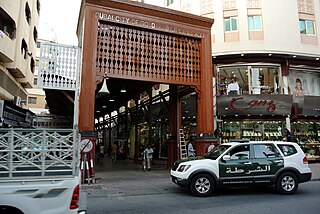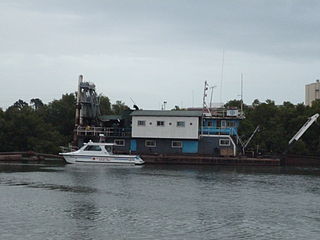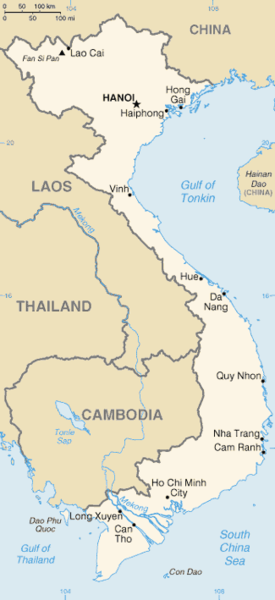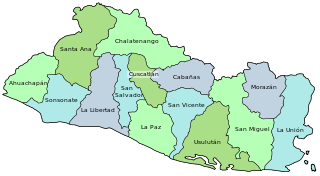Related Research Articles

Sex trafficking is human trafficking for the purpose of sexual exploitation. It has been called a form of modern slavery because of the way victims are forced into sexual acts non-consensually, in a form of sexual slavery. Perpetrators of the crime are called sex traffickers or pimps—people who manipulate victims to engage in various forms of commercial sex with paying customers. Sex traffickers use force, fraud, and coercion as they recruit, transport, and provide their victims as prostitutes. Sometimes victims are brought into a situation of dependency on their trafficker(s), financially or emotionally. Every aspect of sex trafficking is considered a crime, from acquisition to transportation and exploitation of victims. This includes any sexual exploitation of adults or minors, including child sex tourism (CST) and domestic minor sex trafficking (DMST).
Organised crime in Nigeria includes activities by fraudsters, bandits, drug traffickers and racketeers, which have spread across Western Africa. Nigerian criminal gangs rose to prominence in the 1980s, owing much to the globalisation of the world's economies and the high level of lawlessness and corruption in the country.

The United Kingdom (UK) is a destination country for men, women, and children primarily from Africa, Asia, and Eastern Europe who are subjected to human trafficking for the purposes of sexual slavery and forced labour, including domestic servitude. It is ranked as a "Tier 1" country by the US Department of State, which issues an annual report on human trafficking. "Tier 1" countries are those whose governments fully comply with The Trafficking Victims Protection Act's minimum standards for the elimination of trafficking. The TVPA is a federal statute of the United States. It is believed that some victims, including minors from the UK, are also trafficked within the country. It is also believed that migrant workers are trafficked to the UK for forced labour in agriculture, construction, food processing, domestic servitude, and food service. Source countries for trafficking victims in the UK include the United Arab Emirates, Lithuania, Russia, Albania, Ukraine, Malaysia, Thailand, the People's Republic of China (P.R.C.), Nigeria, and Ghana. Precise details about the extent of human trafficking within the UK are not available, and many have questioned the validity of some of the more widely quoted figures. In 2020, the US State Department estimated that there were 13,000 trafficking victims in the UK.

The crime rate in the United Arab Emirates is relatively low compared to more highly industrialized nations. Incidents of petty crime such as pickpocketing are low. The United States Department of State states: "Crime generally is not a problem for travelers in the UAE. However, the U.S. Embassy advises U.S. citizens to take normal precautions against theft, such as not leaving a wallet, purse, or credit card unattended. Although vehicle break-ins in the UAE are rare, U.S. citizens are encouraged to ensure that unattended vehicles are locked and that valuables are not left out in plain sight".

Human trafficking is the trade of humans for the purpose of forced labour, sexual slavery, or commercial sexual exploitation.
Afghanistan is one of the source, transit, and destination country for men, women, and children who are subjected to trafficking in persons, specifically forced labor and forced prostitution. Trafficking within Afghanistan is more prevalent than transnational trafficking, and the majority of victims are children. In 2005 the Afghan Independent Human Rights Commission (AIHRC) reported 150 child trafficking cases to other states. Afghan boys and girls are trafficked within the country and into Iran, Pakistan and India as well as Persian gulf Arab states, where they live as slaves and are forced to prostitution and forced labor in brick kilns, carpet-making factories, and domestic service. In some cases the boys and girls were used for organ trafficking. Forced begging is a growing problem in Afghanistan; Mafia groups organize professional begging rings. Afghan boys are subjected to forced prostitution and forced labor in the drug smuggling industry in Pakistan and Iran. Afghan women and girls are subjected to forced prostitution, arranged and forced marriages—including those in which husbands force their wives into prostitution—and involuntary domestic servitude in Pakistan and Iran, and possibly India. Non-governmental organizations (NGOs) report that over the past year, increasing numbers of boys were trafficked internally. Some families knowingly sell their children for forced prostitution, including for bacha bazi - a practice combining sexual slavery and child prostitution, through which wealthy men use harems of young boys for social and sexual entertainment. Other families send their children with brokers to gain employment. Many of these children end up in forced labor, particularly in Pakistani carpet factories. NGOs indicate that families sometimes make cost-benefit analyses regarding how much debt they can incur based on their tradable family members.
Rates of crime in Guatemala are very high. An average of 101 murders per week were reported in 2018. The countries with the highest crime and violence rates in Central America are El Salvador and Honduras. In the 1990s Guatemala had four cities feature in Latin America's top ten cities by murder rate: Escuintla, Izabal (127), Santa Rosa Cuilapa (111) and Guatemala City (101). According to New Yorker magazine, in 2009, "fewer civilians were reported killed in the war zone of Iraq than were shot, stabbed, or beaten to death in Guatemala," and 97% of homicides "remain unsolved." Much of the violent nature of Guatemalan society stems back to a 36-year-long civil war However, not only has violence maintained its presence in the post-war context of the country following the Guatemalan Civil War, but it has extended to broader social and economic forms of violence.
Prostitution in Namibia is legal and a highly prevalent common practice. Related activities such as solicitation, procuring and being involved in the running of a brothel are illegal. A World Bank study estimated there were about 11,000 prostitutes in Namibia.
Peru is a source, transit, and destination country for men, women, and children subjected to trafficking in persons, specifically forced labor and forced prostitution. Several thousand persons are estimated to be subjected to conditions of forced labor within Peru, mainly in mining, logging, agriculture, brick making, and domestic servitude. Many trafficking victims are women and girls from impoverished rural regions of the Amazon, recruited and coerced into prostitution in urban nightclubs, bars, and brothels, often through false employment offers or promises of education. Indigenous persons are particularly vulnerable to debt bondage. Forced child labor remains a problem, particularly in informal gold mines, cocaine production, and transportation. There were reports the terrorist group Sendero Luminoso, or Shining Path, recruited children as soldiers and drug mules. To a lesser extent, Peruvians are subjected to forced prostitution in Ecuador, Spain, Italy, Japan, and the United States, and forced labor in Argentina, Chile, and Brazil. Peru also is a destination country for some Ecuadorian and Bolivian females in forced prostitution, and some Bolivian citizens in conditions of forced labor. Child sex tourism is present in Iquitos, Madre de Dios, and Cuzco. Traffickers reportedly operate with impunity in certain regions where there is little or no government presence.
Namibia is a country of origin, transit, and destination for foreign and Namibian women and children, and possibly for men subjected to trafficking in persons, specifically conditions of forced labor and forced prostitution. Traffickers exploit Namibian children, as well as children from Angola and Zambia, through forced labor in agriculture, cattle herding, involuntary domestic servitude, charcoal production, and commercial sexual exploitation. In some cases, Namibian parents unwittingly sell their children to traffickers. Reports indicate that vulnerable Namibian children are recruited for forced prostitution in Angola and South Africa, typically by truck drivers. There is also some evidence that traffickers move Namibian women to South Africa and South African women to Namibia to be exploited in forced prostitution. Namibian women and children, including orphans, from rural areas are the most vulnerable to trafficking. Victims are lured by traffickers to urban centers and commercial farms with promises of legitimate work for good wages they may never receive. Some adults subject children to whom they are distantly related to forced labor or commercial sexual exploitation. Small business owners and farmers may also participate in trafficking crimes against women or children. Victims are forced to work long hours to carry out hazardous tasks, and may be beaten or raped by traffickers or third parties.
Mozambique is a source and, to a much lesser extent, a destination country for men, women, and children subjected to trafficking in persons, specifically forced labor and forced prostitution. The use of forced and bonded child laborers is common in rural areas of the country, often with the complicity of family members. Women and girls from these rural areas are also lured to cities with promises of employment or education, as well as to South Africa for involuntary domestic servitude and forced prostitution. NGO's report that Mozambican victims of sex traffickers were taken by traffickers to "training centers" in Eswatini and South Africa in preparation for an expected increase in demand for prostitution during the 2010 World Cup. Young Mozambican men and boys are subjected to conditions of forced labor in South African farms and mines; they often labor for months in South Africa without pay and under coercive conditions before being turned over to police for deportation as illegal migrants. Mozambican adults are subjected to forced labor and forced prostitution in Portugal. Women and girls from Rhodesia and Malawi who voluntarily migrate to Mozambique continue to be manipulated by traffickers into forced prostitution and domestic servitude subsequent to their arrival. There are an estimated 145,600 people living in slavery in Mozambique and countless more being taken unwillingly into South Africa.

Crime in Thailand has been a defining issue in the country for decades, inspiring years of policy and international criticism. Drug use and corruption make up the majority of the crime in Thailand and due to this, many Thai administrations attempted to curtail the drug trade, most notably Thaksin Shinawatra with the 2003 War on Drugs. Since 2003 crime has been decreasing with the crime rate decreasing from 9.97 to 2.58. Despite this, juvenile delinquency has been increasing in recent years.

Crime is present in various forms in the Philippines, and remains a serious issue throughout the country. Illegal drug trade, human trafficking, arms trafficking, murder, corruption and domestic violence remain significant concerns.

Sex trafficking in the United States is a form of human trafficking which involves reproductive slavery or commercial sexual exploitation as it occurs in the United States. Sex trafficking includes the transportation of persons by means of coercion, deception and/or force into exploitative and slavery-like conditions. It is commonly associated with organized crime.
Sex trafficking in China is human trafficking for the purpose of sexual exploitation and slavery that occurs in the People's Republic of China. It is a country of origin, destination, and transit for sexually trafficked persons.

Sexual slavery in China is sexual exploitation and slavery that occurs in the People's Republic of China.
Sex trafficking in Myanmar is human trafficking for the purpose of sexual exploitation and slavery that occurs in the Republic of the Union of Myanmar. Myanmar is primarily a source and transit country for sexually trafficked persons.

Sex trafficking in Vietnam is human trafficking for the purpose of sexual exploitation and slavery that occurs in the Socialist Republic of Vietnam. Vietnam is a source and, to a lesser extent, destination country for sexually trafficked persons.
Cybersex trafficking, live streaming sexual abuse, webcam sex tourism/abuse or ICTs -facilitated sexual exploitation is a cybercrime involving sex trafficking and the live streaming of coerced sexual acts and/or rape on webcam.

Sex trafficking in El Salvador is human trafficking for the purpose of sexual exploitation and slavery that occurs in the Republic of El Salvador. It is a country of origin, transit, and destination for sexually trafficked persons.
References
Notes
- 1 2 van Dijk, Jan; Ruggiero, Vincenco, eds. (December 2003), Forum on Crime and Society (PDF), vol. 1, 2, United Nations Office on Drugs and Crime, pp. 144–150
- ↑ Namibian Ministry of Labour. "Namibian Unemployment Rate". Namibia At Work. Archived from the original on 1 December 2017. Retrieved 26 November 2017.
- ↑ "Crime: Is it really that bad?". Insight Namibia . August 2012. p. 27.
- ↑ US Department of State Bureau of Diplomatic Security. "Namibia 2015 Crime and Safety Report". OSAC. Retrieved 26 November 2017.
- 1 2 Hübschle, Annette (August 2012). "Not just the usual suspects". Insight Namibia . pp. 28–29.
- ↑ Menges, Werner (29 April 2008). "B-1 Butcher: DNA evidence in spotlight". The Namibian .
- ↑ Coomer, Rachel (13 January 2010). "The Status of Gender-based violence in Namibia". The Namibian . Archived from the original on 9 June 2012. Retrieved 29 November 2012.
- ↑ Odendaal, Willem. "The Men Against Violence Against Women Movement in Namibia" (PDF). Legal Assistance Centre. Retrieved 29 November 2012.
- ↑ "Census gives snapshot of Namibia's population". The Namibian. Retrieved 26 November 2017.
- ↑ UNODC Statistics. "2014 Global Homicide Report" (PDF). United Nations. UN Office for Drugs and Crime. Retrieved 26 November 2017.
- ↑ Harman, Adam (14 March 2016). "50 000 gender crimes reported in three years". The Namibian .
- ↑ Kangootui, Nomhle; Immanuel, Shinovene (24 February 2014). "Nation of sick men". The Namibian . Archived from the original on 1 March 2014. Retrieved 24 February 2014.
- ↑ "God Save us from Who?". The Namibian . 24 February 2014. Archived from the original on 1 March 2014. Retrieved 24 February 2014.
- ↑ Kisting, Denver (11 March 2010). "Baby dumping a growing social problem in Namibia". The Namibian .
- ↑ Sister Namibia (2013-04-19). "Baby Dumping". Sister Namibia blog. Archived from the original on 2017-12-01. Retrieved 26 November 2017.
- ↑ "Namibia". Trafficking in Persons Report 2010. U.S. Department of State (June 14, 2010).
 This article incorporates text from this source, which is in the public domain .
This article incorporates text from this source, which is in the public domain . - ↑ Nyaungwa, Nyasha Francis (5 April 2012). "Money laundering on the increase?". Namibia Economist . Archived from the original on 21 February 2013.
- ↑ Menges, Werner (13 December 2011). "Stock theft sentence cut by 17 years". The Namibian . p. 1.
- ↑ Vatileni, Eino (15 February 2022). "743 convicts in jail for rape". The Namibian . p. 1.
Further reading
- Goba, Ray H (June 2001). "Chapter 6: Legislation and Organised Crime in Namibia". In Goredema, Charles (ed.). Organised Crime in Southern Africa. Assessing Legislation. Monograph. Institute for Security Studies. Archived from the original on 2013-03-31. Retrieved 2012-11-28.